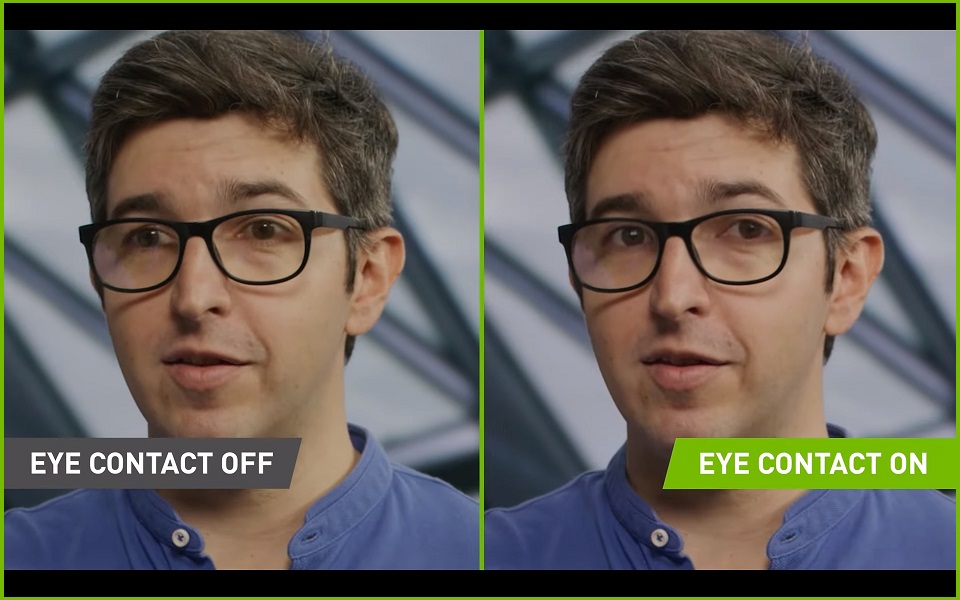Graphics card producer Nvidia has unveiled a feature for its broadcasting software gives you the appearance of looking directly at the camera during live streams and video calls, even when you're not.
Called simply ‘Eye Contact’, the feature uses AI to simulate eye contact with your webcam.
“Eye Contact is ideal for content creators seeking to record themselves while reading their notes or a script, or avoiding having to stare directly at the camera,” Nvidea Product Line Manager Gerardo Delgado said.
“Video conference presenters will look at the eyes of the person they’re speaking with, improving engagement with their audiences.
“The eyes retain their natural colour and blinks, and there’s even a disconnect feature in case you look too far away, to transition smoothly between simulated and real eyes.”
Nvidia has released the development kit for its eye-contact technology for app makers to integrate into their products.
In a blog post, Nvidia's engineers explained how Eye Contact crops a small 256 by 65 pixel eye patch from a tracked face and feeds it into the AI network which makes it redirect the gaze forward and blends it back into the original video, all in real-time.
Eye Contact is just the latest feature Nvidia has released for its Broadcast software aimed at content creators and streamers.
The tech uses dedicated AI cores in Nvidia GPUs to perform additional functions like autoframing scenes and even cutting out background noise.
The RTX’s noise cancelling feature delivered impressive results on release two years ago, cutting out the sound of a vacuum cleaner, loud keyboards, and intensely loud fans making noise in the background of a broadcast.
Nvidia isn’t the only company with fake eye contact features.
Last year, iPads and iPhones were given limited use of the technology through iOS 14. Apple made its eye contact feature a default setting for the FaceTime app.
Microsoft also has eye contact built-in to Teams for video calls but is only usable on devices with a dedicated neural processing unit.
Meta is taking eye tracking one step further by integrating it into the latest model of its virtual reality headsets to make it appear as if avatars in virtual worlds are looking directly at one another.
“Eye and face tracking have a wealth of possibilities, both today and long into the future,” Meta CTO Andrew Bosworth said.
“Right now, eye and face tracking are delivering more expressive avatars on Meta Quest Pro, allowing people’s digital selves to more closely match their real-world facial expressions.”










